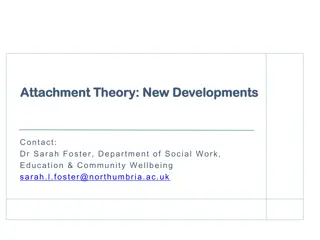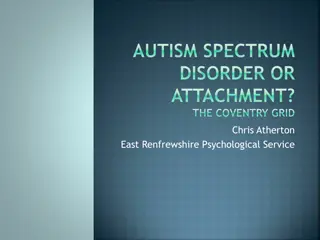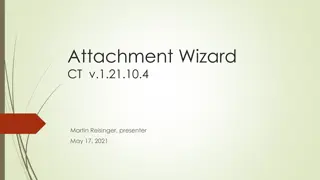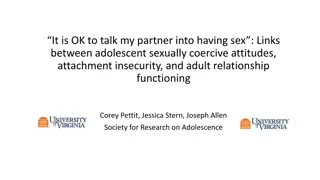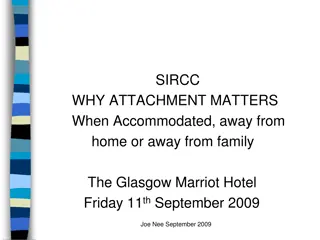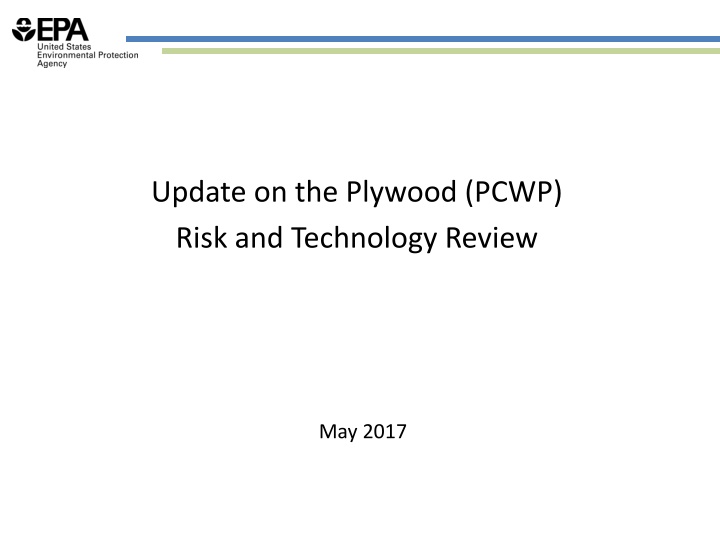
Plywood PCWP Risk and Technology Review May 2017 Update
Explore the comprehensive update on the Plywood (PCWP) Risk and Technology Review from May 2017. Dive into the background, residual risk review, technology assessment, and other requirements concerning the plywood industry. Gain insights into risk assessment, technology advancement, regulatory compliance, and more.
Download Presentation

Please find below an Image/Link to download the presentation.
The content on the website is provided AS IS for your information and personal use only. It may not be sold, licensed, or shared on other websites without obtaining consent from the author. If you encounter any issues during the download, it is possible that the publisher has removed the file from their server.
You are allowed to download the files provided on this website for personal or commercial use, subject to the condition that they are used lawfully. All files are the property of their respective owners.
The content on the website is provided AS IS for your information and personal use only. It may not be sold, licensed, or shared on other websites without obtaining consent from the author.
E N D
Presentation Transcript
Update on the Plywood (PCWP) Risk and Technology Review May 2017
Overview Risk Assessment Technology Review Other Requirements 2007 Court Remand ICR
Background CAA Risk and Technology Review Requirements 112(f)(2) residual risk 112(d)(6) technology review 2007 PCWP Court Remand Develop 112(d)(2)-(3) standards or 112(h) work practices EPA Goal: Complete 112(f)(2) simultaneously Court-ordered RTR Deadline: Must promulgate by June 30, 2020 Propose by June 2019 3
Residual Risk Review Risk input file: prepare and then run model Chronic and acute inhalation (cancer and non-cancer) Multi-pathway risk Ecological risk Review results: determine risk driver pollutants and processes Acceptability determination made Default Acceptability: Cancer risk: 1 in a million Non-Cancer risk: Hazard Index (HI) <1 Acute risk: Hazard Quotient (HQ) <1 Ample margin of safety analysis Assesses the costs of further reducing risk Assesses benefits to the environment of further reductions AMOS a component of the Technology Review Data Source: ICR 4
Technology Review Analyze current practices, processes, and control technologies that meet MACT Identify all MACT controls and compliance options in use Document current control technology performance Analyze new developments in practices, processes and controls that meet MACT Bio-based control systems Resin formaldehyde changes due to CARB/TSCA Best approach to recognize new technologies Estimate regulatory impacts of all options. Consider: facilities impacted, small business considerations Costs, environmental (include non-air), energy 5
Other Requirements Evaluate monitoring, reporting, and recordkeeping Evaluate SSM Address 2007 Court Remand 6
Remanded Units Press predryers (existing) Fiberboard mat dryers (existing) Board coolers (existing) Dry rotary dryers* Veneer redryers* Softwood plywood presses Hardwood plywood presses Engineered wood presses Hardwood veneer dryers* Humidifiers Atmospheric refiners Formers Blenders Rotary agricultural fiber dryers Agricultural fiber board presses Sanders Saws Fiber washers Chippers Log vats Lumber kilns Storage tanks Wastewater operations Miscellaneous coating operations* Stand-alone digesters *Work practice applies 7
Industry Segment Approach Identify practice that reflects 112(d)(a) and reference a standard which sets an emission limit. Example: Adhesive HAP reduction and CARB/TSCA Set standard by segment; Example: Particleboard; Use of Adhesive meeting CARB/TSCA rule OSB: Use of Adhesive exempt from CARB/TSCA standard Set standard for Lumber Dry Kilns (no adhesives) by work practice Example: Establish practice to limit over-drying
Update on the Plywood (PCWP) RTR Information Collection Request (ICR) May 2017
Overview ICR Purpose Facility List Information in Hand Vs. Our Needs Changes Since 1st FR Notice Next Steps ICR Goal: Collect the information needed to develop a defensible, data-driven rule
ICR Purpose: Residual Risk Review Data Data needs at emission release point level Hazardous air pollutants (HAP) emissions data Actual emissions tons/yr stack test data and/or estimates Allowable emissions tons/yr Must be > actual Maximum short-term emissions for acute risk; default: Actual x 10 Process identification (SCC, description) Speciated by pollutant Latitude/longitude coordinates Release height, velocity, temperature 11
ICR Purpose: Inform Technology Review The Administrator shall review, and revise as necessary (taking into account developments in practices, processes, and control technologies), emission standards no less often than every 8 years. ICR will provide information practices, processes, and control technologies currently in use Identify MACT controls and compliance options in use Document current control technology performance Resin formaldehyde changes due to CARB 12
ICR Purpose: Other Collect remanded process unit information Collect SSM information Collect monitoring, reporting, and recordkeeping information Collect information needed to assess regulatory impacts Facilities impacted Small businesses Cost impacts Environmental impacts Energy impacts 13
Facility List Draft list contains 397 facilities, including 364 major and 33 synthetic minor (or unknown) facilities: 187 PCWP mills 33 PCWP mills with collocated lumber 29 synthetic minor/unknown 210 sawmills with kilns 4 synthetic minor/unknown Provide list for comment with 2nd FR notice
Information In Hand Vs. Our Needs 2014 National Emissions Inventory (NEI) for risk modeling Incomplete missing mills, process units, and expected HAP emissions Missing emission release parameters and coordinates The EPA mill inventory/equipment configurations (e.g., process unit, resin, APCD, and production rate data) based on 1999 ICR/EIS data. Update needed to: Estimate emissions, augment NEI Perform technology review Inventory remanded units, establish standards/work practices Assess cost, environmental, and energy impacts EPA HAP emissions test data is from AP-42/NCASI in 1998 Need PWCP MACT compliance tests Tests showing emissions reduction from resin changes NCASI Miscellaneous Source Survey Helpful for justifying work practices for remanded units 15
Changes Since 1st FR Notice Removed Phase II test plan Intend to increase 90-day response time to at least 120 days Synthetic minors no longer required to complete ICR spreadsheet 1-page form with permit documentation PCWP process test data, if available, and a PCWP process unit controlled to achieve synthetic minor status Refined various ICR questions, per suggestions Dropped requests for material safety data sheets, continuous parameter monitoring data, and continuous opacity monitoring data Reduced request for historical emissions test data Go back to 2004 instead of 2003 for HAP For direct-fired unit PM, go back to 2012 not to exceed 5 reports. Considering adding provisional emission calculations based on AP-42 emission factors use is optional Using fuel analysis metal data from boiler MACT wood-firing, as suggested In progress (e.g., need to add kiln emission factors)
Electronic Submission Option Via CEDRI Options: (1) Mail in flash drive or (2) Upload non-CBI response to CEDRI Mail CBI portions of ICR response to EPA CBI office on flash drive CEDRI approach (non-CBI only) Many facilities are already registered CEDRI users Upload spreadsheet and attachments Automated validations result in real-time quality control of facility attributes avoiding EPA follow-up questions Single FRS ID per ICR spreadsheet Potential advantages Burden Reduction: Facility attributes (e.g., units, processes, and released points and parameters) electronically available for multiple EPA reporting programs (e.g., TRI, CEDRI). Quality Improvement: Ready availability of data for use, review, revision and amendment by facilities. Improved Accuracy: Future NEI and National Air Toxics Assessment (NATA)
ICR Next Steps Continuing to address public comments and stakeholder feedback Responses to comments on 1st notice will be provided Republish ICR spreadsheet, instructions, and supporting statement Publish 2nd Federal Register notice to open additional 30-day comment period, and submit ICR to OMB Revise all ICR materials and respond to comments With OMB approval, implement ICR likely 4th Quarter 2017 18


